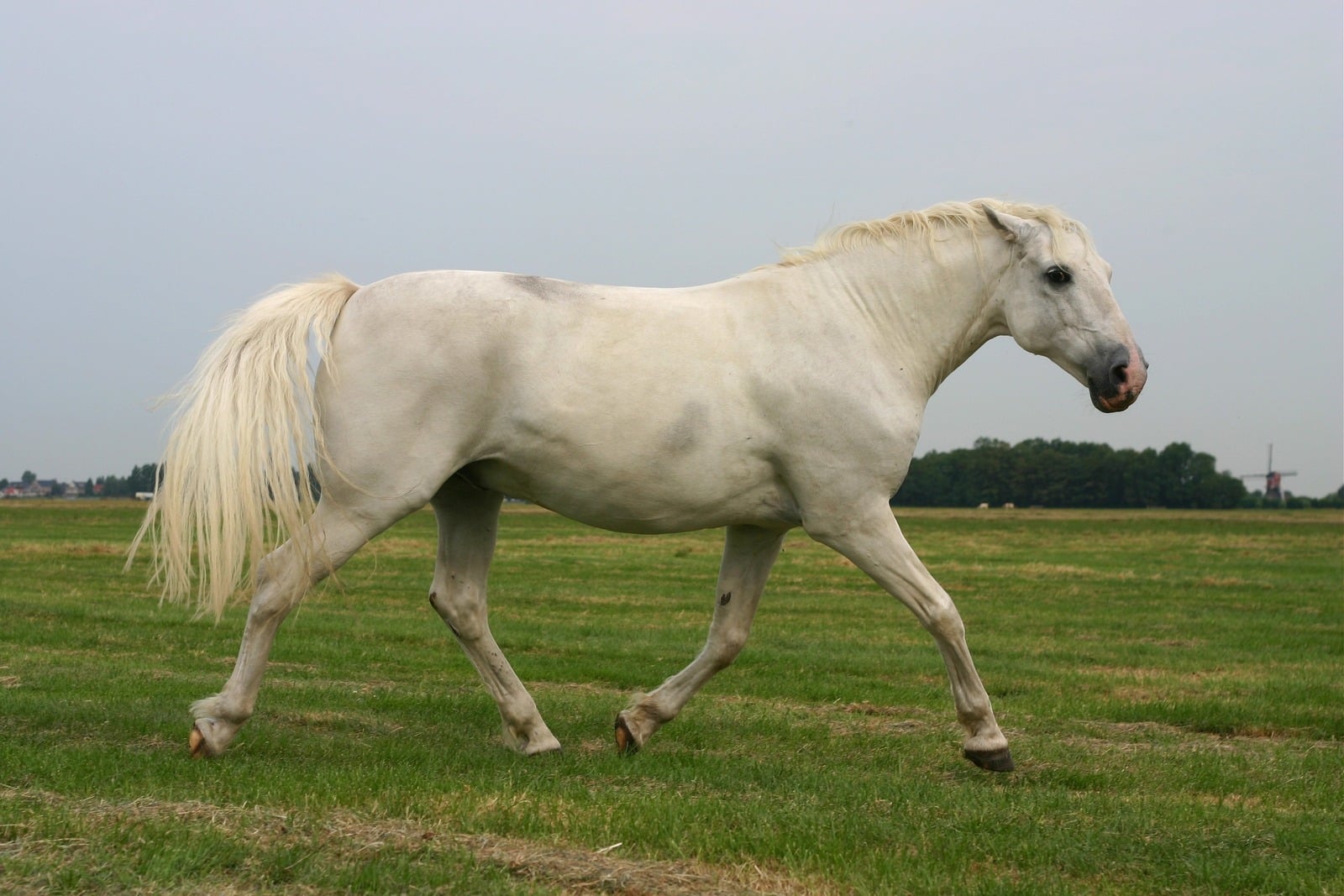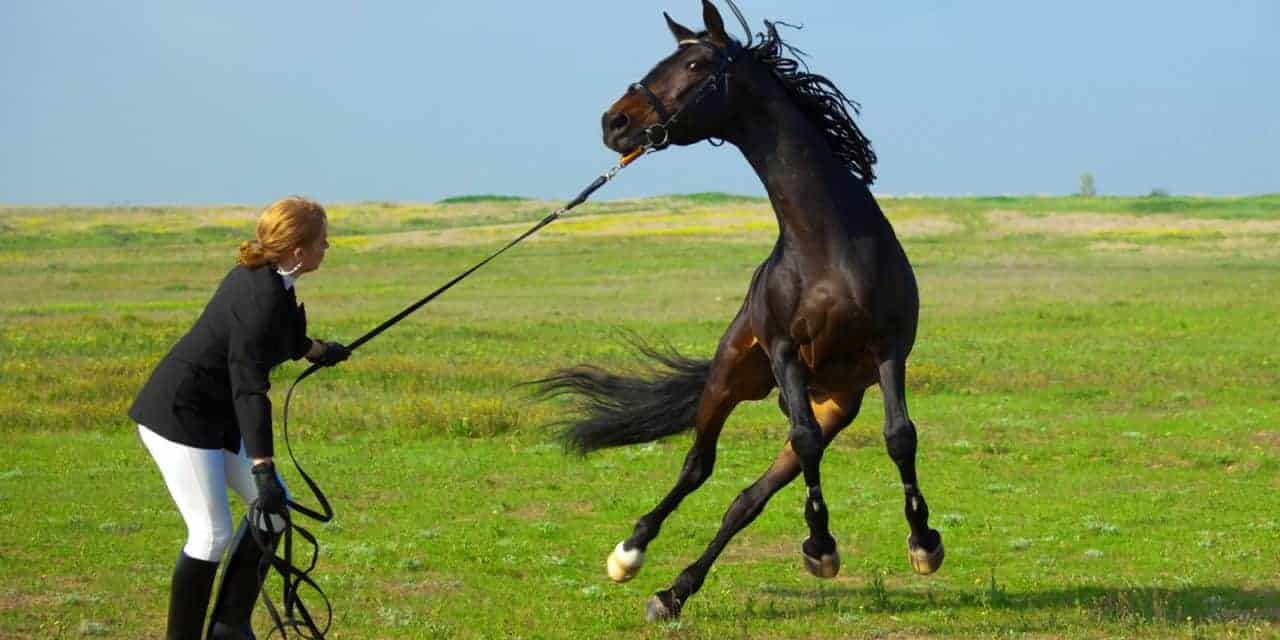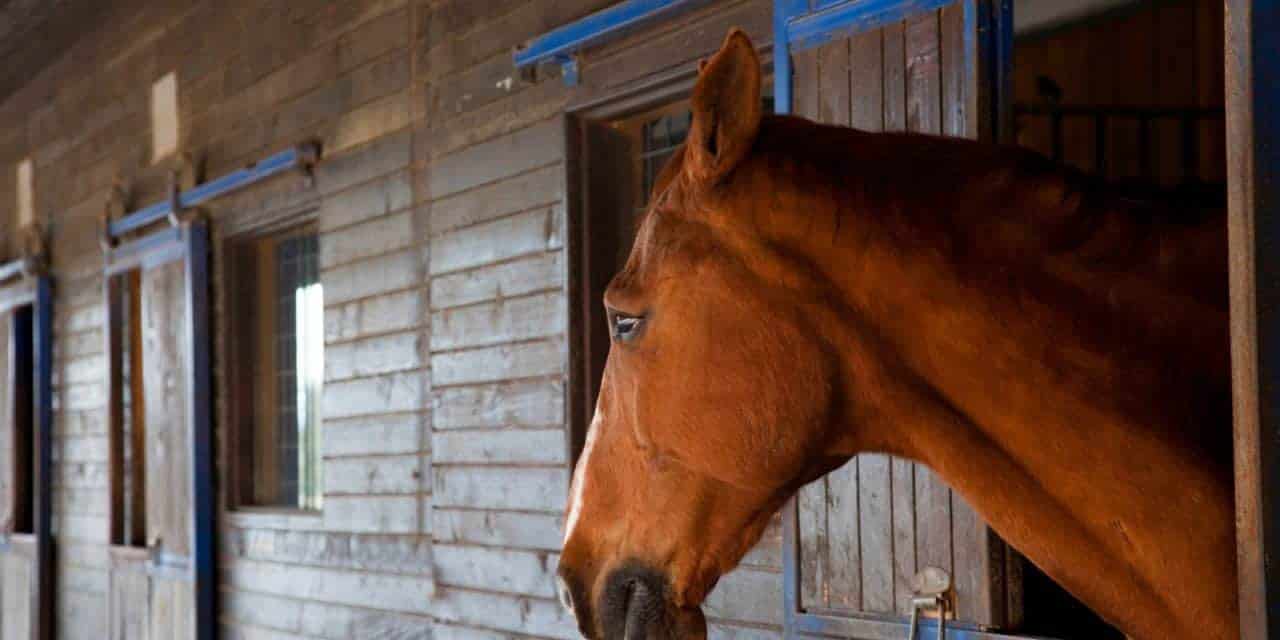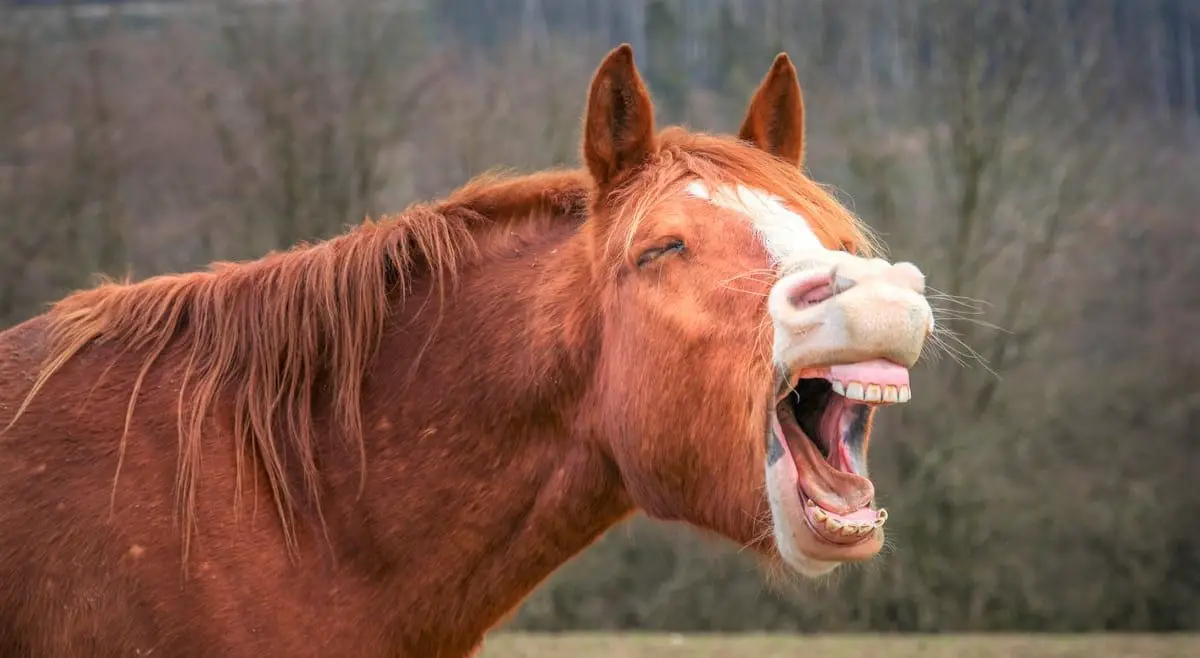Understanding a horse’s behavior is essential for anyone who works with or cares for these noble animals. One particular aspect of their non-verbal communication that often prompts questions is the positioning of their ears. In this comprehensive guide, we’ll explore the various reasons behind why horses put their ears back and how to interpret this behavior accurately.
When it comes to horse ears back meaning, the short answer is that it can signify a range of emotions and intentions. Here’s a quick rundown:
- Ears flat and pinned back may indicate that the horse is feeling territorial, angry, or irritated. This is a crucial warning for handlers or riders, as the horse might act aggressively towards people or other horses.
- If the horse’s ears are pointed backward but not pinned, it can mean the horse is listening to something behind it, which might suggest attentiveness or alertness to the environment.
- Ear pinning can also be a defensive reaction when a horse feels threatened.
- When a horse is focusing intently on a sound of interest, it turns its ears towards it. The ear position can reflect what the horse is thinking about or paying attention to.
- Horses may keep their ears pointed backward while resting to remain aware of their surroundings.
- During hard work or effort, a horse might also position its ears backward, signaling concentration and dedication to the task at hand.
- When ears are pointed back towards the rider, it might mean the horse is listening for cues and is under the rider’s control.
- In some cases, horses put their ears back when they are scared or sense danger, orienting their ears towards the source of their fear or towards their rider for guidance.
Delving Deeper into Horse Ear Language

Grasping the intricacies of horse ear language provides insight into the equine mind, which goes beyond the basic emotions to anticipate potential behaviors. Through careful observation and interpretation of ear positions, individuals can engage in safer and more profound connections with these animals.
The Vocabulary of Equine Ear Signals
The mobility of a horse’s ears enables them to communicate a complex set of signals that are essential for equine caretakers to recognize:
- Asymmetrical Ear Positioning: This behavior reflects a horse’s ability to simultaneously process information from different directions, embodying their heightened sensory perception.
- Ears Slightly Forward: Such positioning often denotes a blend of inquisitiveness and cautiousness, as the horse assesses whether to engage with a novel object or scenario.
- Rapid Ear Movements: These could imply that the horse is experiencing a sense of uncertainty or heightened arousal, typically occurring in unfamiliar or unpredictable settings.
Interpreting Horse Ear Positions
Fluency in the silent language of horses requires attention to the context and associated body language. The horse’s familiarity with the environment and the presence of any stressors or other animals influence their ear signals and the messages they convey.
Postures of Interest and Engagement
When horses display forward-facing ears, it often correlates with a heightened state of alertness, as evidenced by their attentive gaze and posture.
Relaxed and Contented States
In contrast, a horse in a state of relaxation and contentment typically exhibits loosely held ears to the sides, along with other indicators of tranquility such as a calm demeanor and a gentle gaze.
Signs of Discomfort or Distress
A horse might exhibit signs of discomfort or unease through a subtle positioning of the ears back or to the side, which may be paired with body tension and other indicators of stress.
Deciphering Complex Equine Ear Signals
Fostering a deep understanding of equine ear signals is fundamental for interpreting more intricate ear positions:
- Swiveling Ears: This reflects a horse’s effort to discern the origin or direction of a sound, denoting an attentive and inquisitive mindset.
- One Ear Forward, One Ear Back: This posture often signifies a horse’s divided attention between its handler and other environmental factors.
- Ears Tilted Outward: Typically observed when a horse is at ease yet remains observant of its surroundings, such as during grazing or rest periods among familiar companions.
Contextual Interpretation
Understanding the context is crucial when deciphering a horse’s ear positioning, as the meaning can vary dramatically depending on the surroundings and situation.
Advanced Communication Cues
Interpreting advanced cues requires observing the combination of ear and body language. For example, a horse showing one ear back with calm chewing could be relaxed, while the same ear movement alongside signs of physical tension might suggest stress or discomfort.
Enhancing your ability to read and understand these cues fosters a more instinctive grasp of equine communication. This skill not only strengthens human-horse relationships but also augments the safety and effectiveness of interactions with these majestic animals.
Advanced Insights into Equine Body Language

Equine communication extends far beyond ear positioning to encompass a variety of signals expressed through their entire body. For those aspiring to form a deeper bond with horses, it’s imperative to become attuned to these subtle cues. This section explores the broader spectrum of equine expression, offering a more comprehensive understanding of how horses convey their feelings and intentions.
Recognizing Comprehensive Behavioral Cues
Ensuring safety for both equines and humans involves the recognition of a horse’s entire body language. Aggressive behaviors are particularly vital to notice, as they encompass more than just ear movements:
- Snorting or flared nostrils: These often reflect a state of arousal that could escalate.
- Bowed head: This posture, when seen alongside other aggressive cues, suggests a defensive or offensive attitude.
- Staring: An intense and direct look can be a prelude to assertive actions.
Subtle Signs of Equine Unease
Subdued behavioral patterns can also indicate that a horse is experiencing stress or discomfort. These signs require a discerning eye:
- Weight shifting: When a horse frequently changes its weight from hoof to hoof, it may signal nervousness.
- Frequent yawning: Beyond fatigue, this can be an expression of stress in equines.
- Visible sclera: The exposure of the white part of a horse’s eye can be a clue to its anxiety.
Reading Postures and Tail Expressions
A comprehensive understanding of equine communication also includes interpreting postures and tail movements. A horse’s stance can foreshadow its next move, indicating whether it’s poised for flight or relaxation. Similarly, the tail acts as a barometer of mood, with its various motions revealing feelings from serenity to annoyance.
Interpreting Body Stances
A horse’s stance is a window into its emotional world:
- An arched neck can exude confidence or serve as a challenge in some instances.
- A high head often denotes vigilance, though it can also suggest uneasiness.
- A drooping posture, while commonly a sign of ease, may also indicate submission or defeat in other contexts.
Decoding Tail Signals
The tail is an expressive feature that warrants attention:
- A clamped tail may reveal trepidation or a submissive state.
- An actively swishing tail could be a response to irritation or the presence of insects.
- A tail held aloft usually signifies excitement or good spirits, yet it’s essential to consider the overall context.
Contextual Analysis of Equine Gestures
Interpreting a horse’s body language is a holistic process that involves understanding the entire scenario. The horse’s previous experiences, the current environment, and ongoing circumstances all shape its behavior. Long-term observation in various settings is the key to accurately deciphering equine gestures.
Environmental Influences on Behavior
A horse’s surroundings can have a profound effect on its behavior. Unfamiliar environments might induce signs of nervousness or watchfulness, while a setting that a horse knows well usually induces a state of relaxation.
Social Dynamics Among Horses
The complex social structures of horses are reflected in their body language, which can indicate everything from playfulness to mutual trust:
- Light nudges or gentle nipping often signify playful interactions or affection.
- Horses standing head-to-tail usually demonstrate mutual trust, aiding each other in repelling pests.
- When horses move in unison, it’s often a display of amity and cohesion within the group.
Achieving proficiency in reading equine body language demands patience, consistent observation, and hands-on experience. By investing time to learn and interpret these visual signals, handlers can cultivate more meaningful and secure connections with horses, enhancing both welfare and communication.
Exploring the Depths of Equine Communication

Delving into the complex language of equine communication enriches the human-horse relationship. Recognizing a broad spectrum of horse mood indicators is paramount in responding to their emotions considerately, thus nurturing a bond built on mutual trust and respect.
Deciphering Equine Physical Cues
In-depth knowledge of equine physical cues is crucial for those aiming to enhance their connection with these sentient beings. These cues, ranging from the subtleties of facial expressions to the nuances of posture, are reflective of a horse’s inner state and are key to effective and empathetic care.
- A horse in a state of ease may exhibit a relaxed gaze and a tail that moves freely, whereas signs of tension are evident in its rigid stance and tightly held tail.
- Exploring with a tilted head and approaching with a mix of caution and curiosity are signs a horse is interested in its environment.
- Playful actions, including light-hearted bucking, are expressions of a vibrant and spirited horse.
Gauging Equine Emotional States
Discerning horse handlers can identify various emotional states through physical signs that horses express. These signs are crucial to understanding and catering to their psychological needs.
- Body Language: A horse’s body language, such as stiffness or fluidity of movement, can indicate its level of comfort or distress.
- Vital Signs: Changes in vital signs, like breathing patterns, can offer clues to a horse’s emotional well-being.
Facial Insights
The countenance of a horse often mirrors its sentiments. A serene and content horse typically presents a calm facial expression with a relaxed jaw, while signs of distress or discomfort may be evident in the tightening of facial muscles and an intense gaze.
Vital Signs as Mood Indicators
Monitoring a horse’s vital signs can provide immediate feedback on its state of mind. Alertness to variations in breathing and pulse can inform a handler’s approach, whether it requires reassurance or intervention for the horse’s comfort.
Comprehensive Observation for Clearer Understanding
Assessing a horse’s overall demeanor and combining various physical cues yields a more accurate insight into its mental state. This integrated perspective is fundamental to effective interaction and responsible caregiving.
- Positive indicators, such as a relaxed gait and bright eyes, often point to a horse’s confidence and curiosity.
- Indications of potential health issues or emotional turmoil might include a lackluster expression and minimal movement.
Dynamics of Movement and Interaction
The manner in which horses approach and engage with others is laden with meaning. A smooth approach typically denotes a friendly disposition, while assertive or encroaching behavior may reflect a need for further training or boundary setting.
Understanding Postural Messages
A horse’s posture can signal its mental state and intention. A balanced, square stance often suggests contentment, while a resting hind leg can either denote relaxation or discomfort, depending on additional behavioral cues.
Behavioral Context Matters
Behavior in horses is shaped by a combination of immediate stimuli, contextual factors, and past experiences. Considering these elements is vital for a thorough understanding and more refined communication.
- Previous negative encounters can lead to apprehensive or defensive actions.
- The contrast in a horse’s behavior between familiar and unfamiliar settings can be stark, revealing their level of comfort or anxiety.
Comprehending equine communication is multifaceted, involving attention to the horse’s individuality, situational factors, and physical expressions. Commitment to learning these aspects can significantly improve the handler’s ability to engage with horses safely and enjoyably.
Understanding Equine Ear Movements for Better Interaction

Equine ear movements are subtle yet potent indicators of a horse’s emotions and intentions. By recognizing the subtleties of these movements, we can improve our interactions with these animals, leading to a more harmonious relationship and a safer environment for both parties. This section examines the nuanced messages conveyed by equine ear language and underscores the value of interpreting these signals accurately.
Recognizing a Relaxed Equine
An equine’s neutral ear posture is indicative of its relaxed state of mind, signaling contentment and ease. This observation can reassure handlers of the horse’s comfort and absence of stress or anxiety.
Curiosity and Awareness
Ears that are perked up signify a horse’s curiosity or increased alertness. This response can be elicited by various stimuli, from the presence of familiar individuals to novel elements in their environment.
Attention Behind
When a horse’s ears are directed backward, it could be a signal of attentiveness to something in that direction. This may involve another horse or a human interaction, such as someone mounted on its back.
Sideways Listening
Equine ears held out laterally often denote a peaceful yet observant state, an indication that the horse is relaxed but still attentive to its environment.
Independent Ear Movement
The ability of a horse’s ears to move independently is a testament to their acute hearing. Ears rotating in various directions show that the horse is actively listening to different sounds around it.
Indications of Discontent
Ears that are pinned back are a strong signal of a horse’s irritation or aggression. Such a posture should be understood as a cautionary sign, prompting handlers to act carefully.
Split Focus
A horse with asymmetrical ear alignment is likely dividing its attention. This means the horse may be simultaneously focusing on the rider’s commands and other environmental factors.
Signs of Indecision or Anxiety
Rapidly moving ears could suggest that a horse is feeling unsure or anxious, common in situations where the animal is confronted with unfamiliar environments or stimuli.
Subtle Ear Movements
Ear movements that don’t fit predefined patterns can still provide insights into a horse’s mindset. For instance:
- Ears slightly shifting forward before moving back may reflect a horse’s engagement with a given command and readiness to act.
- Ears that turn leisurely usually indicate the horse is calmly observing its surroundings, free from immediate concerns.
Interpreting Ears in Context
Understanding a horse’s mood requires observing the ears in relation to other body language:
- For example, a horse with its ears back could be merely attentive if its tail is relaxed, but if the tail is swishing, it may be a sign of annoyance.
- Evaluating ear positions alongside the horse’s head carriage, muscular tension, and overall stance is crucial for accurate interpretation.
By carefully observing these ear positions within their broader behavioral context, those who work with horses can deepen their understanding of equine communication. This knowledge is essential for anyone involved in equestrian care, training, or riding, and is fundamental to fostering a safe and responsive human-horse dynamic.
While you’re exploring the intriguing behaviors of horses, such as why they put their ears back, you might also find it fascinating to delve into other equine actions. Discover the reasons behind these intriguing behaviors by visiting our articles on why horses flap their lips, understanding the movement with why horses bob their heads, and the meanings behind why horses show their teeth. Each behavior provides unique insights into the emotional and communicative world of horses.
Interacting with Horses: Reading Their Ears

How to Respond to Horse Ear Movements
Knowing how to respond to horse ear movements can greatly improve your interactions with horses. If you notice ears pinned back, for example, it’s best to give the horse space and approach with caution. On the other hand, if the horse’s ears are pricked forward, it may be open to engagement and interaction.
Building a Better Bond Through Ear Language
Ultimately, building a better bond through ear language is about respect and understanding. Learning to read and respond to a horse’s ear positions can lead to a deeper connection and more effective communication between horse and human.
For a more detailed exploration of horse communication and behavior, Horse Illustrated offers valuable insights into how to interpret the position of a horse’s ears in various contexts.
By gaining an understanding of horse ear language, equine body language, and horse behavior, we can create an environment of mutual respect and trust with these magnificent creatures. Whether you’re a seasoned equestrian or a horse enthusiast, recognizing the subtleties of equine communication is a rewarding and essential aspect of horse care and interaction.



